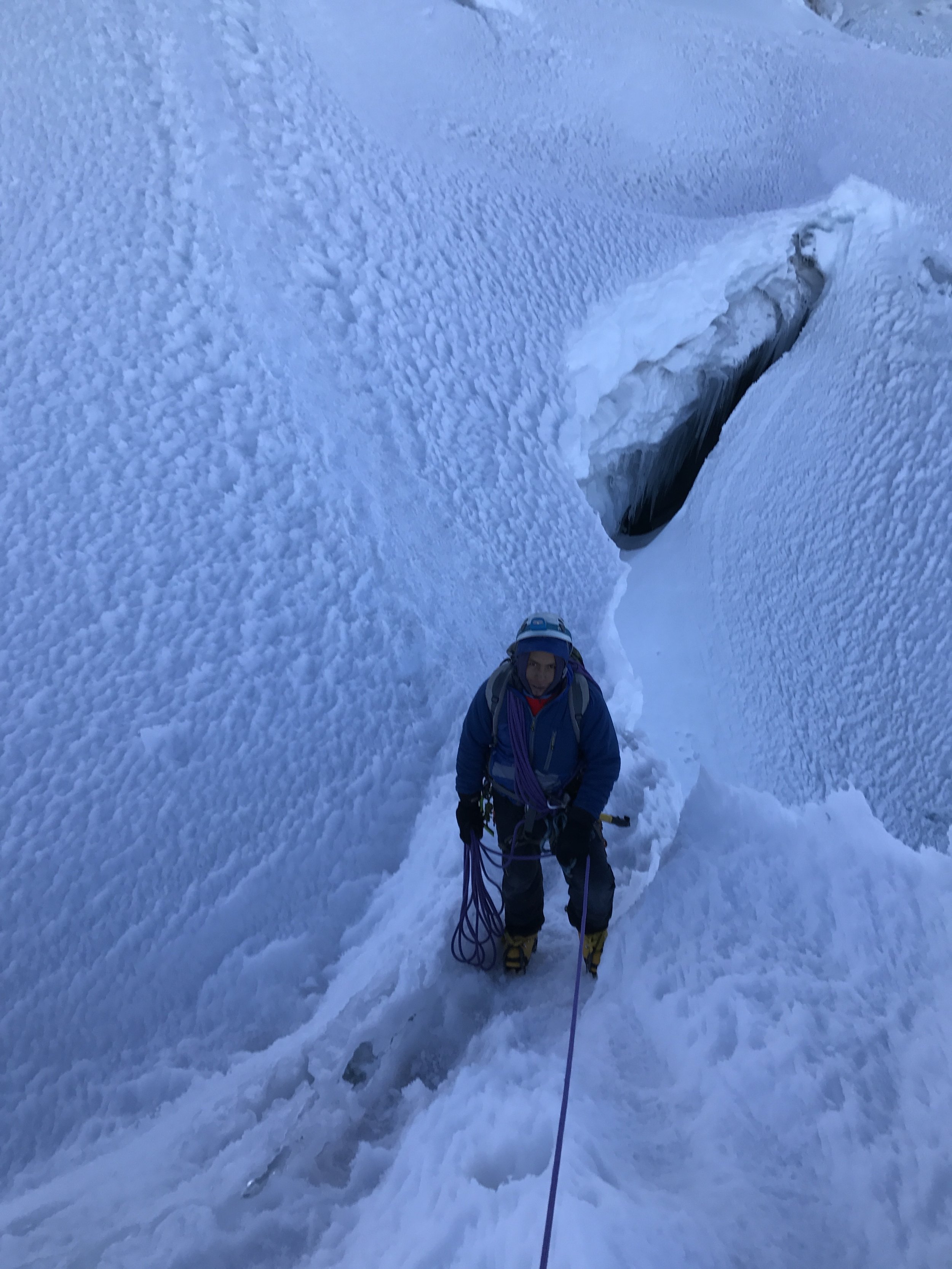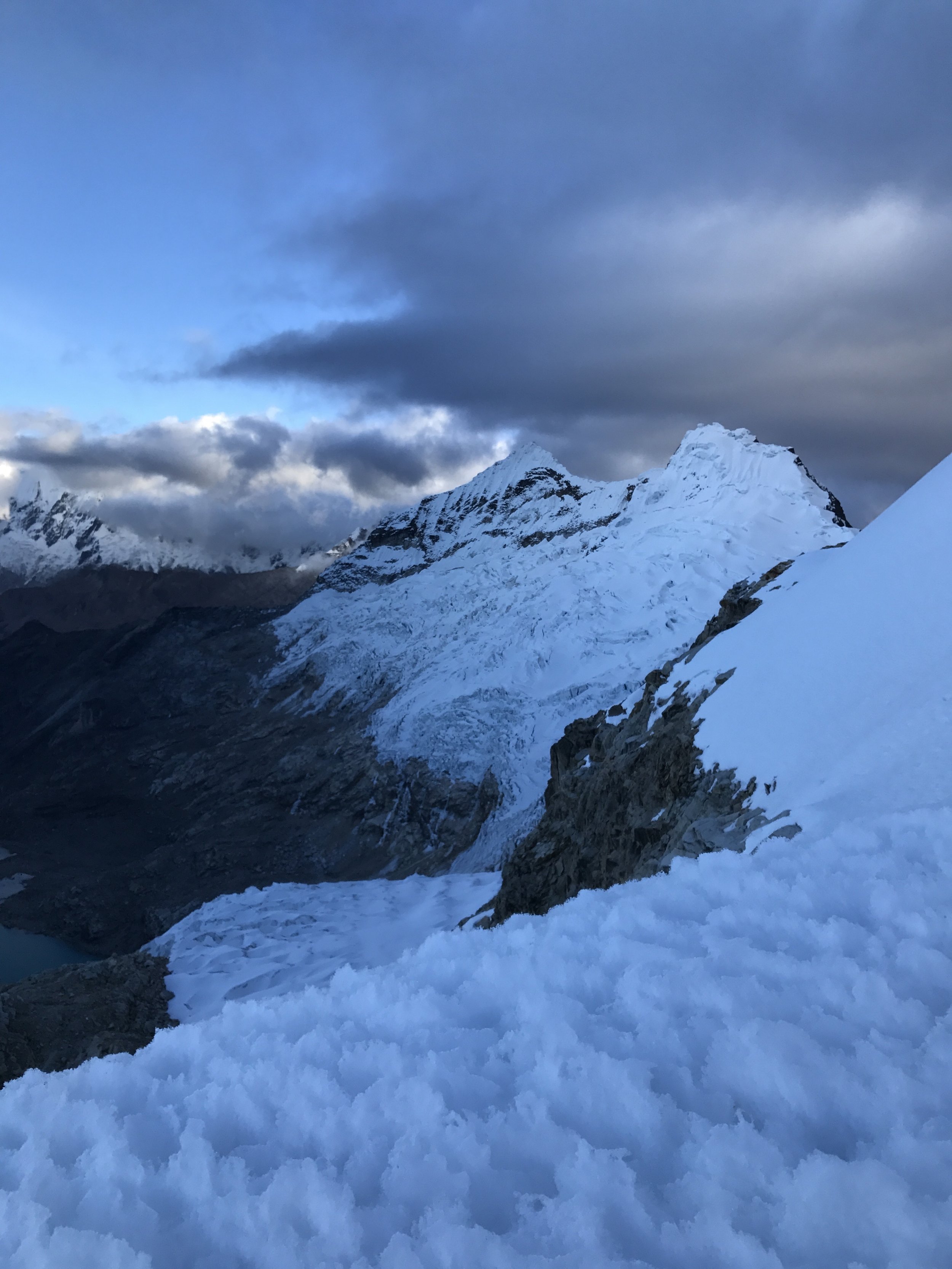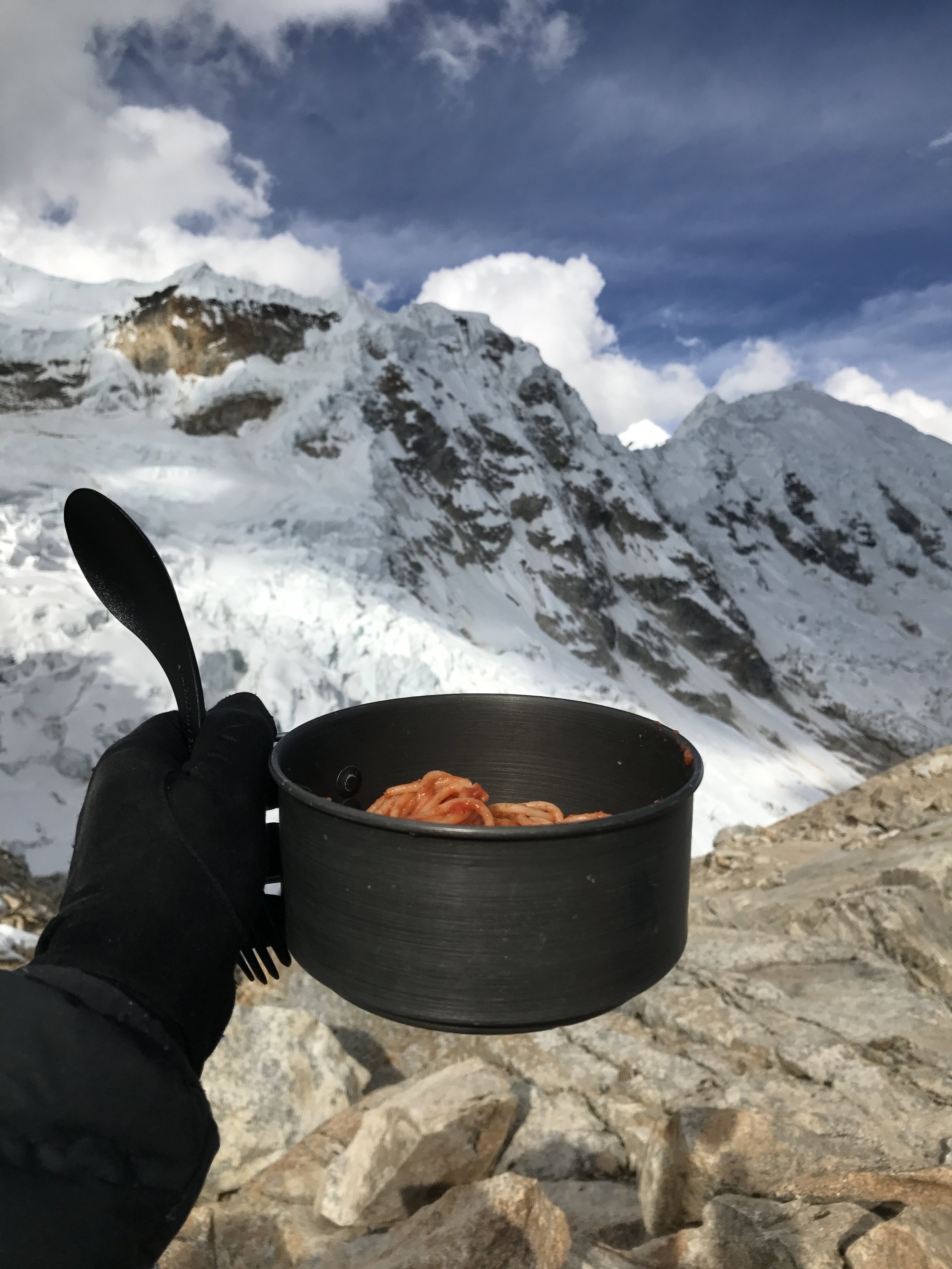Tocclaraju
when preparation is not enough
Mountain: Tocllaraju
Altitude: 19,797 ft | 6,034 m
Location: Cordillera Blanca, Peru 9.34763° S, 77.3968° WI have been very diligently preparing for this day for almost 4 months. Cardio, weight-lifting, stair-climbing, running. Every morning on sunrise my body complained, while my inner voice parroted “Peru, Peru”. But extensive physical preparations do not help one to overcome the fear of falling down.
On every exhale I need to shape my mouth in such a way so the evaporation of warm air into the cold night streams downwards and doesn’t clutter my view. Clack. Clack. This is the sound of my crampons. I am desperately trying to get into an evenly-paced rhythm, but for some reason, my movement is completely asynchronous. I am trying to count in my head. During brief moments when I lift my head all I see are fields of penitentes (thin blades of hardened snow or ice found at high altitude) that look like shark jaws. The sky is covered with stars, forming a bright LED carpet. But one part of the sky is shadowed by a dark mass — that’s Tocllaraju and that’s what we are climbing.
This is a usual routine — wake up around midnight, feel the pain of crawling out of the warm sleeping bag into the biting air of the tent, while asking yourself “Why am I doing it”. Melt snow into water, drink some tea, and force some food down your thought. During summit mornings I always imagine my stomach to resemble an empty concrete room — when I start throwing food into it I can almost hear it bouncing on the solid floor. And then we start walking. I try not to count the hours before sunrise. But today something is not going as usual. I am lagging behind. I can’t find my pace. The uphill struggle finally comes to an end when we reach a gorge. But after examination, I realize that we have arrived to a dead end with a crevasse around. The only way was to go up is to get out ropes and ice climb. To start on the wall though, one needs to almost jump onto the wall, since the ice wall is separated by a meter-long crevasse.
I have been very diligently preparing for this day for almost 4 months. My new regime included training two times a day. Cardio, weight-lifting, stair-climbing, running. Every morning at sunrise my body complained, while my inner voice parroted“Peru, Peru”. And all those weight-lifting exercises did not go to waste when I had to carry a 50L backpack from base camp to high camp. My guide offered to hire porters, but I have proudly refused. What kind of mountain climbing is it, when other people are carrying my weight?
But extensive physical preparations do not help one to overcome the fear of falling down. I have seen crevasses bigger than this before, but never had I to jump across them. The wind was picking up — the weather was turning bad and we decided to turn back to avoid the storm. To be honest I was running away from the challenging part, trying to blame the weather conditions for the defeat. As I looked back on descent, I saw a huge cloud approaching the mountain. In mere 4 hours, we were back to the empty high camp. When I crawled into my sleeping bag I still could not relax since the strong gust was sweeping our tent. I tried to get into embryo pose to warm up, but the blasting wind did not allow my body to resume normal temperature. At this point, the only option was to pack as soon as possible and to get the hell down to the base camp.
As we were approaching the base camp, the feeling of safety, warmness slowly started to creep in. But the fear of crevasses, that strong feeling “is that my limit” left scars in my heart that even the hot tea and delicious dinner could not fill.



